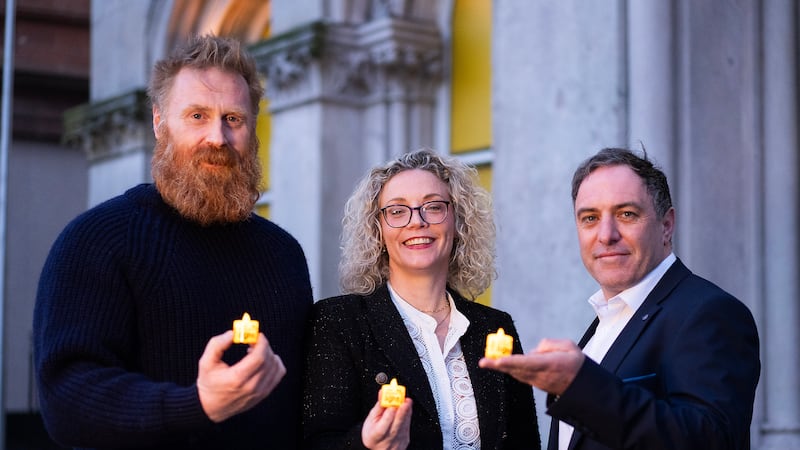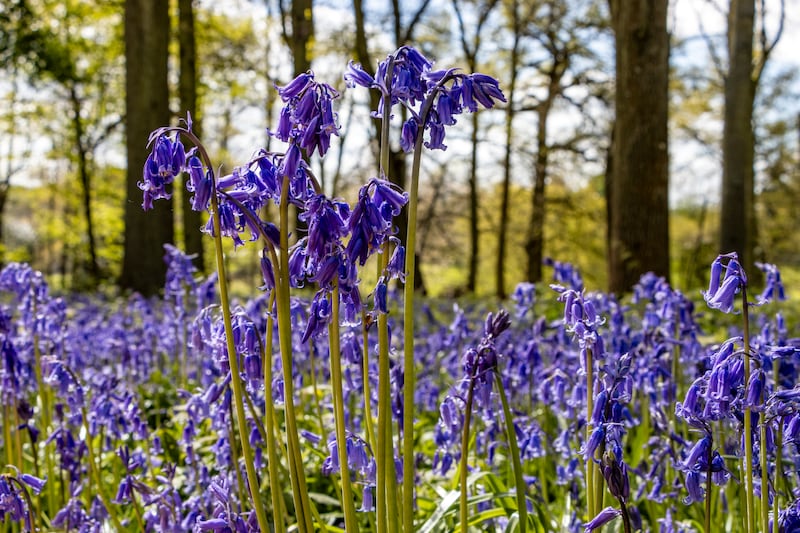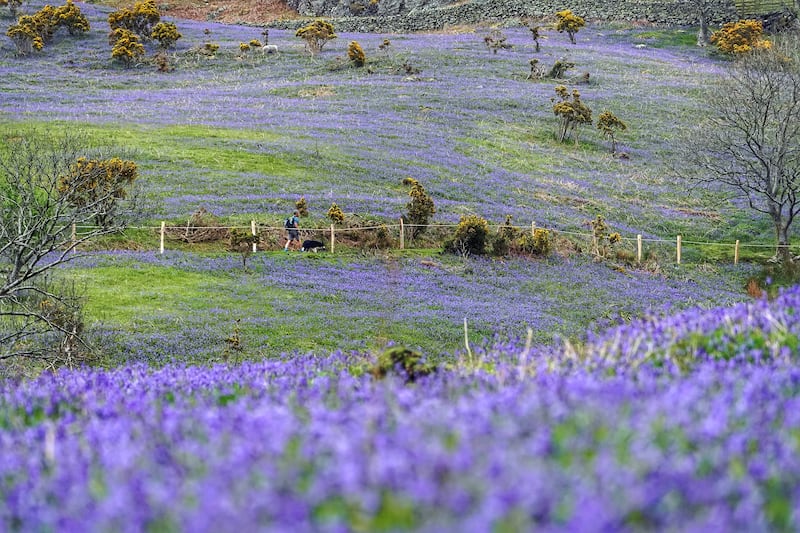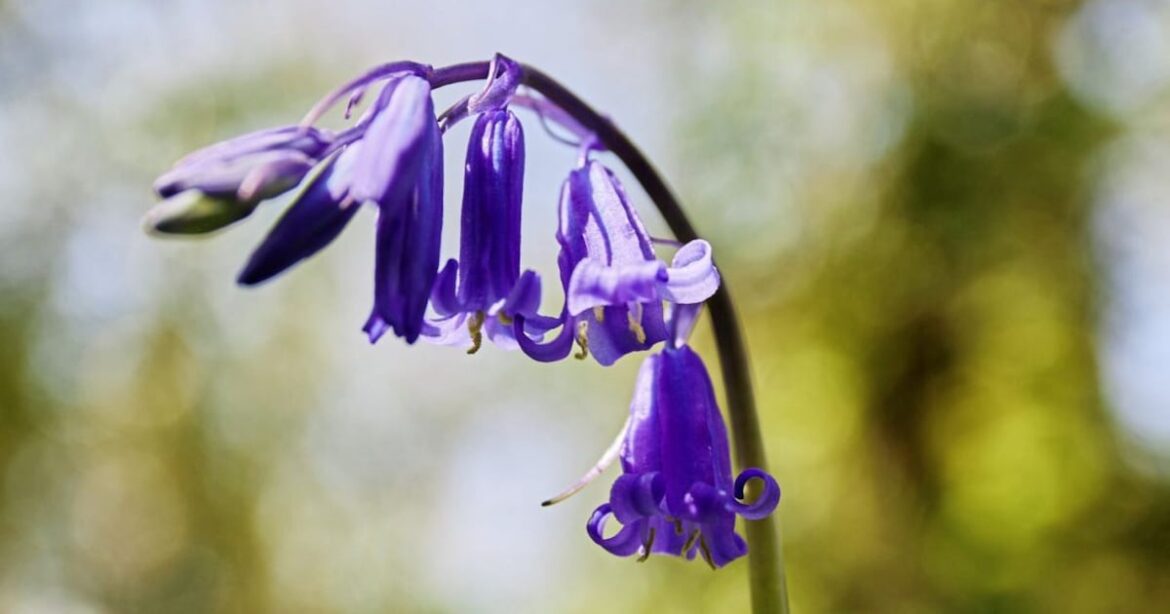“There is a silent eloquence
In every wild bluebell
That fills my softened heart with bliss
That words could never tell.”


The above extract is from The Bluebell by Anne Brontë, younger sister of Charlotte and Emily.
There’s no shortage of poetry about bluebells, reflecting the spring-flowering plant’s stature in terms of mythology, symbolism and general allure.
For me, Hyacinthoides non-scripta is the third and final flower in a triumvirate of successive spring bulbs, following on from snowdrops and daffodils. All three are suited best to naturalistic planting, preferably with a woodland backdrop before the deciduous canopy arrives.
They can tolerate shade and prefer moist but well-drained soil, with additional leaf mould or garden compost if need be, to replicate the forest floor. They should be planted in clumps, under and around trees, and never in any way approximating symmetry.
 The bluebell’s natural habitat is a woodland (Alamy Stock Photo)
The bluebell’s natural habitat is a woodland (Alamy Stock Photo)
Like daffodils and snowdrops, bluebells will naturalise and augment their numbers over time, and as with all flowers of this ilk, the more the better.
Nothing carpets a woodland floor more effectively and enchantingly than bluebells, yet to most appreciate the delicate-looking blue-violet flowers, you need to get down low and up close.
Here, you will see petals curled back at the mouth of the bell and perhaps catch the delicate scent.
The bluebell is native to both Ireland and Britain, though Hyacinthoides non-scripta is often referred to as the ‘English’ bluebell, for reasons you’re probably familiar with.
 Bluebells flowered later last year due to the cool wet spring (Hugh Morhersole)
Bluebells flowered later last year due to the cool wet spring (Hugh Morhersole)
Before we again blame the Brits for everything, it’s worth noting that like many Irish wildflowers, bluebells are threatened by habitat loss, as hedgerows, scrub and woodlands are burned or bulldozed.
Yet arguably the greatest threat to our native Irish bluebell comes not from within or from our nearest neighbour, but from Spain.
The closely-related Hyacinthoides hispanica – Spanish bluebell – was once marketed in northern Europe as a hardier and more robust alternative to our own, but it is now classed as an invasive non-native species on both sides of the border.
Unlike the native bluebell, the Spanish variety is unscented and its paler flowers positioned all the way around upright stems, rather than on one side on arching stems.
The strappy green leaves of the Spanish bluebell are broader too though both varieties can occasionally produce white and pink flowers.
Like many Irish wildflowers, bluebells are threatened by habitat loss, as hedgerows, scrub and woodlands are burned or bulldozed
 A hillside of bluebells (Owen Humphreys/PA)
A hillside of bluebells (Owen Humphreys/PA)
The problem arises because the two hybridise, producing Hyacinthoides × massartiana, which is often difficult to identify as it variously displays the characteristics of both parents.
Bluebells, like snowdrops, are best planted ‘in the green’, which is immediately after they’ve finished flowering though they’ll also be available as dry bulbs in the autumn.
Only handle wearing gloves as all parts of the plant are toxic and the sap can cause skin irritation. Also, be aware that it is an offence to remove bluebells from the wild.
They can be slow starters once planted, initially establishing strong roots and often only flowering in the second spring.
 Bluebells at Murlough (Alamy Stock Photo)
Bluebells at Murlough (Alamy Stock Photo)
When they’ve finished flowering, leave the foliage to die back rather than cutting it off, as with all bulbs, this is the transfer of spent energy under ground in preparation for next year.
One other option is to collect seed after flowering and cultivate your own, though this is far from a quick fix, as they take several years to bloom, meaning it’s only for the most dedicated.

